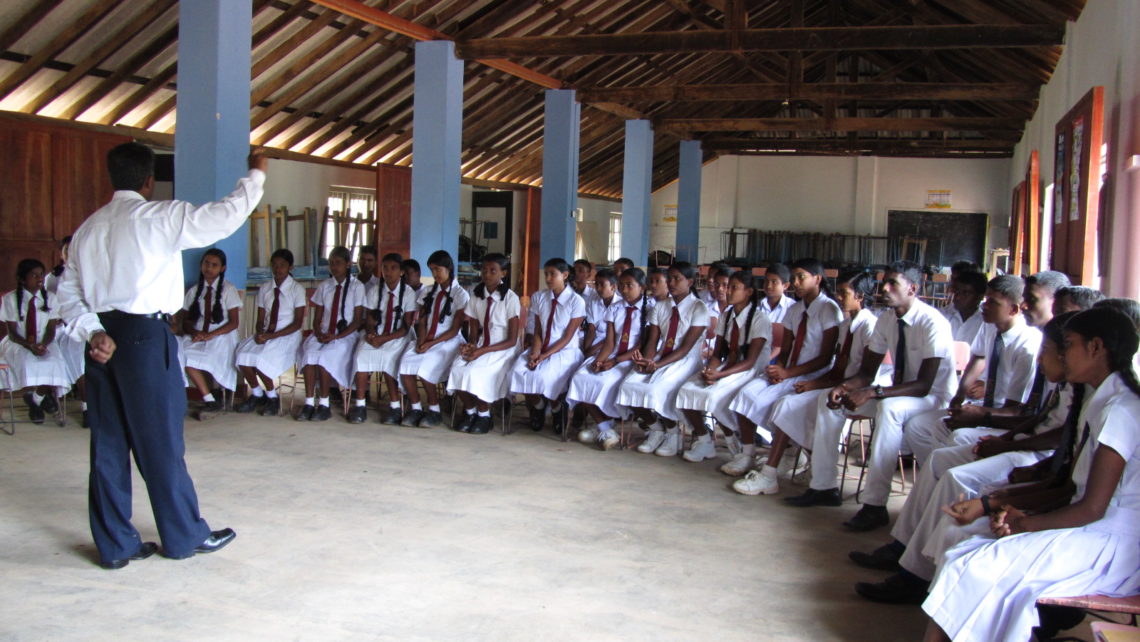Context: Significant labour disparities exist between demographic groups in Sri Lanka. In 2015, Sri Lanka’s labour force participation rate was 53.6 per cent, and females represented only 35.0 per cent of this workforce. Disparity between age groups is also a major issue. Youth unemployment was nearly 17 per cent in 2015, some four times greater than the national average. At roughly 8 per cent, the unemployment rate was highest among students that passed the General Certificate of Education Advanced Level (GCE A/L) exam and/or obtained higher education. Taking into account that 62 per cent of students passed the GCE A/L, it should be noted that competition for scarce white-collar positions contributes significantly to the high youth unemployment rate.
Implementation of programme/initiative: The Sri Lankan Government works primarily through the Ministry of Youth Affairs and Skills Development (MYASD) and the Ministry of National Policies and Economic Affairs (MNPEA) to tackle youth unemployment and economic development. MYASD offers Technical and Vocational Education and Training (TVET), so that youth acquire the appropriate skills to fill available positions in the current job market. As a complement to this training, MNPEA promotes the hiring of young graduates by funding school-to-work transition programmes organized through youth organizations, such as the National Youth Services Council (NYSC). MNPEA-sponsored youth organizations partner with public and private employment services nationwide to provide consultation on career development, promote entrepreneurship and female empowerment, and enhance youth participation in national development and decision-making bodies.
MNPEA also administers a National Vocational Qualification (NVQ) system, through the Vocational Training Authority (VTA). The NVQ system offers seven levels of certification that provide youth with the flexibility to enter the job market upon achieving their desired educational level.
Main Challenges: Sri Lanka’s youth employment promotion programmes are supported by inadequate infrastructure, such as under-resourced career development centres. Also, the nation’s public school curriculum does not coincide with labour market demands. In addition to programmatic reform, enhancing youth employability requires changing attitudes towards learning, motivating youth to pursue skills development, and improving the quality of education.
Results achieved: Annually, NYSC and VTA enroll 25,000 and 60,000 youth in nationally accredited TVET programmes, respectively. Some 80 per cent of these students secure public or private sector employment following graduation. By designing certifications to meet the skill requirements of the current job market, the NVQ system further enhances youth employability. Moreover, studying beyond the fifth NVQ level qualifies young students to pursue post-secondary degrees and, potentially, white-collar positions.
Moving Forward: To address youth employability, the Government of Sri Lanka must incorporate the issue into its broader agenda for economic development. As the quality and capability of its workforce determines the success of Sri Lankan industries and the desire of companies to invest in the national economy, it is essential that youth receive an education that reflects labour market demands. Economic reforms should consider youth and private sector feedback and strengthen existing resources to create a dynamic market that supports youth entrepreneurship in addition to skills development.
Replicability: Some of the core aspects that have contributed to the success of this initiative have been the improvement in youth knowledge about educational opportunities and labour market demands as well as providing career guidance. Acting as lessons for others, the Sri Lankan Government has shown the benefit of increasing access to information on job training and career counselling by implementing policies that support new and existing initiatives, such as the NVQ system. The Government has also strengthened private sector collaboration on job creation and promotion, which is increasingly being acknowledged as an effective way of enhancing the school-to-work transition.
References:
Department of Census and Statistics. Quarterly Report of the Sri Lanka Labour Force
Survey. Battaramulla, Ministry of National Policies and Economic Affairs, 2015.
The World Bank. “Labor force participation rate, female.” DataBank. Accessed 8
December 2017; The World Bank. “Labor force participation rate, total.”
DataBank. Accessed 8 December 2017; The World Bank. “Unemployment rate,
total.” DataBank. Accessed 8 December 2017; The World Bank. “Unemployment
rate, youth total.” DataBank. Accessed 8 December 2017.
Vocational Training Authority of Sri Lanka. “National Vocational Qualification Levels.”
Accessed 10 December 2017.
Acknowledgements:
This good practice was kindly edited by Ms. Elizabeth Linklater.
Project Details
Date: June 6, 2018
